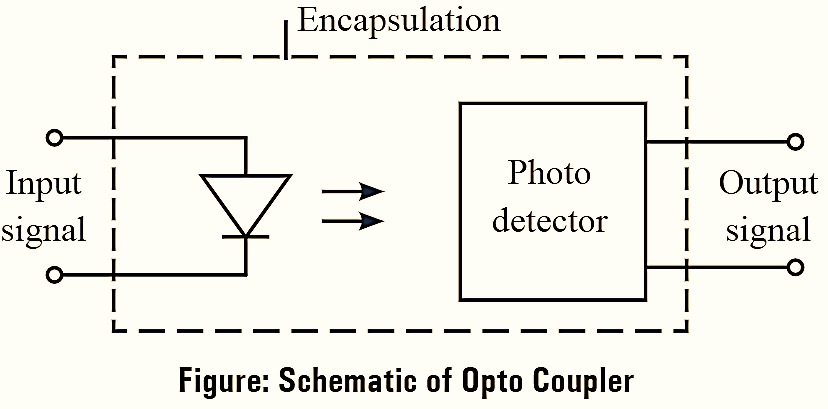An optocoupler is a solid state electronic device, which includes a light emitter, light path and a light detector enclosed in single package. It is also referred as optoisolator, since it provides electrical isolation between any two circuits.

The block schematic of an optocoupler is depicted in above figure. As shown in figure, an optocoupler consists of a light source such as LED, laser etc and a photo detector such as photo diode, phototransistor or a photo SCR in a package.
The voltage (or) signal applied at the input is transformed into light intensity using LED and the reverse process is carried out at the detector to recover actual signal.
In an optocoupler, the light from source (LED) to photo detector is allowed to traverse in single direction without any electrical connection. The amount of isolation between light source and detector depends on the separation distance between them and also on type of material in light path. Optocouplers or optoisolators are widely used to attain the isolation matching between high and low voltage systems, because usually these are with high voltages and also high isolation resistance. GaAs LEDs provides spectral matching with silicon sensors. The power dissipation in LEDs and phototransistors in optocoupler is nearly same. The output current does not change i.e., constant, if the temperature ranges between 25º and 70ºC. In photo-transistor, the collector current slightly affected by the collector to emitter voltage, VCE The switching time of the device is less for high currents.
Applications of OptoCoupler
- It is used in switching circuits.
- In level and position sensing circuits.
- In fiber optic communication system.
- DC coupling or pulse type coupling circuits.